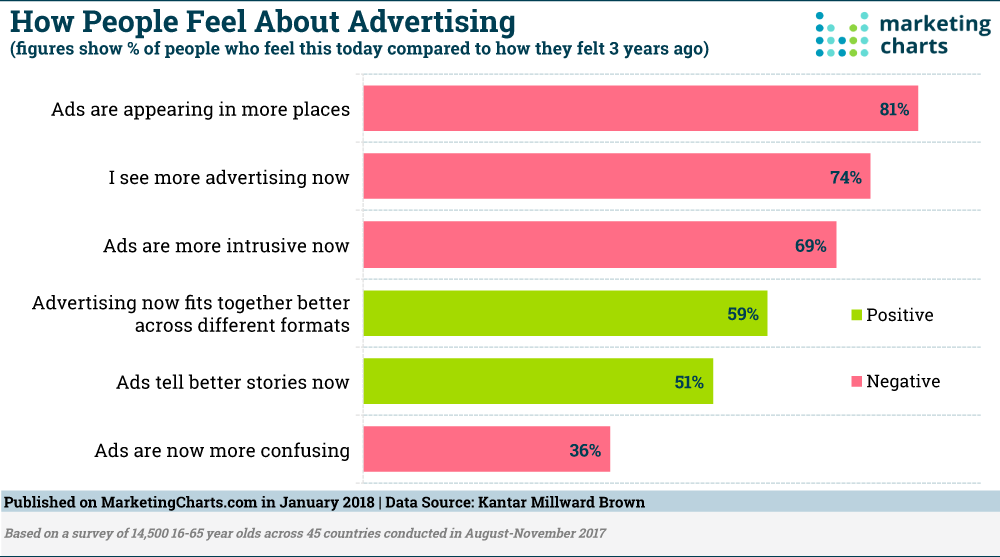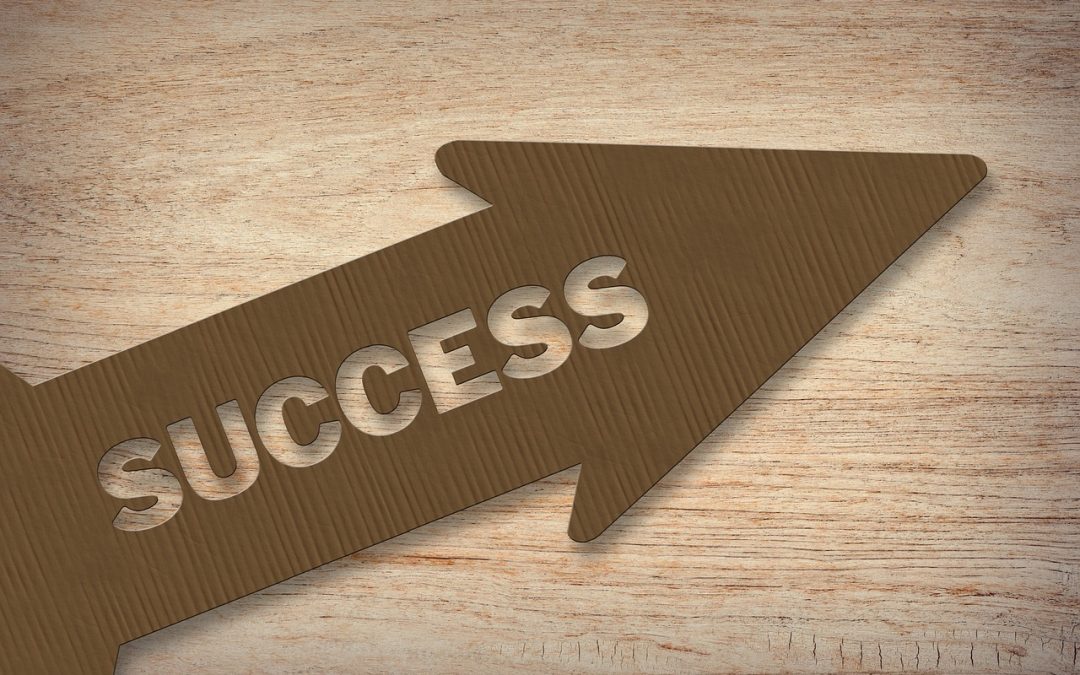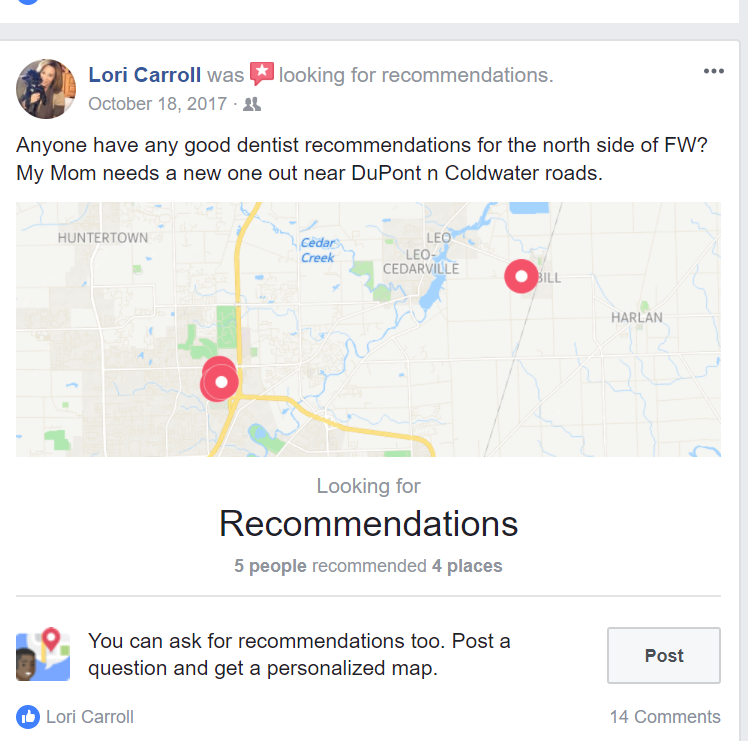
by Scott Howard | May 3, 2018 | Marketing and Advertising Insights, ScLoHo's Web World, The Not-So-Secret Writings of ScLoHo, WOWO Fort Wayne Radio Advertising with Scott Howard
Do job titles matter? I work for WOWO radio and a few years ago, our parent company, Federated Media began calling their advertising salespeople: Integrated Marketing Managers or Integrated Marketing Specialists or some other variation. The keywords are Integrated Marketing and it’s being used today to describe something that has been going on for a long time.
Integrated Marketing is simply the coordination of multiple marketing messages and outreaches that work together in harmony. For years this was a role of Advertising Agencies. Businesses would pay Ad Agencies to do all the advertising creative, buying advertising schedules and telling business owners what to do to be successful with their advertising.
Sometimes that works. Often the folks in an ad agency have talents and skills that the coffee shop owner, or boat builder, or carpet cleaner lack.
Ad agencies create the ads that we see and hear on a national scale. Some that come to mind are McDonalds, Home Depot, Google, car insurance ads, those are created by advertising agency professionals.
On a local level, most companies don’t have an advertising agency to do that work. Instead they rely on someone at the advertising outlets, like the TV station, the newspaper, the radio station to do the creative work. That might work out, but each of those individuals are only working in their advertising medium.
Or there are some advertising agencies that specialize in only one or two advertising mediums. Online, especially social media marketing has been the kind of boutique agencies that have popped up in the past decade. Some are pretty good, but most are pretty bad. The online world is constantly changing and the changes that Google makes to their algorithm, or Facebook to their news-feed, are out of our control.
But let’s get back to the subject of Integrated Marketing and job titles. The reason the Integrated Marketing Specialist or Integrated Marketing Manager job title has been adopted by several of my co-workers at Federated Media is because we actually do have the ability to work with more than one advertising platform and build marketing campaigns that are integrated across multiple mediums.
Right now, this month, I am running a few campaigns for different advertising partners that I call a Hot Leads program. I am using Email, Facebook, Text messaging, Radio ads on the air with WOWO and ads online. We gather names, contact information and a few specific questions for my advertising partners that will help them connect with people who want to be contacted by these specific advertising partners. This is truly an Integrated Marketing campaign.
However, I don’t recommend this to everyone I meet with. It’s not always appropriate, or the best marketing approach for the objectives we need to accomplish.
So my business card does not say Integrated Marketing Manager or Specialist. Instead I use terms that are very specific to what I do. Advertising Sales and Marketing Consultant.
I took a deep dive into that last week and you can read or listen to what I said if you wish.
My approach is to simply work with you in the way and manner that is most appropriate. I’ve been doing this since my youngest daughter was born and she’s now 32. I can help you sort out the jargon and advertising insider terms that others use to try and convince you to buy their stuff. And if you want an Integrated Marketing Specialist, I’m your dude too.

by Scott Howard | Mar 15, 2018 | Marketing and Advertising Insights, ScLoHo's Media, ScLoHo's Web World, The Not-So-Secret Writings of ScLoHo
We are well into 2018 and I have a very important question:
How’s Your Online Visibility?
When was the last time you did an overhaul of your website? If it’s been more than 18 months, your business is hurting.
I sell a variety of radio and digital advertising solutions and there are times when I tell people before we can send people to your website, you need an update.
Here’s a few key items to keep in mind in 2018:
Mobile has overtaken laptop and desktop. This means instead of sitting down with our computer to look for stuff, we are more likely to grab our phone. Your website has to be more than “mobile friendly”. Think Mobile First.
Responsive websites are the new norm instead of having a separate mobile site and a more robust desktop website with the exception of e-commerce sites. When I say Mobile First, assume that the first visit someone is going to have to your website is that tiny screen on their phone, not the big desktop monitor.
So design your website for the best UX (that’s User Experience) on Mobile First and then include a full experience for the minority of folks who will use their computer to visit your site.
Next up, is Voice Search is taking over the world. All the Apple Fans thought it was cool that they could have a conversation with Siri until I showed them how I could also get what I needed by talking to my phone with the “Ok Google” technology.
But that was just the beginning of voice activated devices. With Alexa and all the others battling it out to be our best buddies in the artificial intelligence world, is your website and company up to the latest standards?
Search Engine Optimization is part of it, but if you are only using methods that were the gold standard in 2015 or before, you risk getting lost online. Searches are based on so much more than keywords these days. Search is personalized to each of us. Your previous browsing and search and your location is all known and while that helps you find what you are looking for when you are browsing, it has also changed the rules for a business to be found online.
Google continues to penalize old and outdated websites and web-pages and is always looking for the best content to serve you and I as consumers, not you and I as business owners and marketers.
How are you using Social Media for your business? Are you using Facebook Live? Do you know how to create engaging content? Do you know the differences between Likes and Engagement? Is your LinkedIn profile set up properly?
When was the last time you Googled yourself? Do it. Also on Bing, Yahoo, and YouTube and Facebook.
Are you listed on the review sites? Are you monitoring and responding to reviews?
I know this is a lot to consider but it really is important stuff.
Some of these things you cannot do yourself, you will need to pay professionals to do it. And even though I’m a professional at some of this, and I can help guide you, most of my recommendations will involve hiring people and companies besides myself. I have contacts and connections to people and companies that are good at these things and stay on top of it so you can focus on what you do best in running your business.
Remember my original question: How’s Your Online Visibility?
Need some help or guidance on what we’ve talked about today? Reach out to me.
And here’s a study just released about the smart speakers that are growing in popularity.

by Scott Howard | Feb 28, 2018 | Marketing and Advertising Insights, Really? The Personal ScLoHo, ScLoHo Sales Tips, ScLoHo's Fort Wayne, The Not-So-Secret Writings of ScLoHo, Uncategorized
I bought a car this month and thought I’d share some lessons for you and your business in this essay I’m calling Selling a Salesperson.
While I am keenly aware of the process because of my profession, the general public is more aware of the tactics too than ever before. Here’s the list of 9 observations I wrote right after buying my car:
- Customers may be smarter or better informed than you.
- Over reliance on certain sales phrases can actually work against you.
- Ask the right questions and pay attention to the answers.
- Using your customers name is nice, except when you get it wrong.
- Upselling works with some people but you have to be straight with your customer.
- Customers can walk away if they don’t like the deal you are offering.
- Tracking your advertising is usually a guessing game at best.
- Honesty wins and builds trust.
- Follow through helps with referrals and additional sales.
As I share my story, see how it applies to you and your business and what lessons you can apply to make things better for all.
My wife, Kathy, was driving home from a friends house and noticed the temperature gauge on her 1999 Chevy Lumina was sneaking into the danger zone so she pulled over and let it cool down before heading all the way back to our place. She took it to our mechanic who popped open the hood, opened a few things and pronounced the verdict: blown head-gasket.
(Kathy found this car a few years ago as a steal. Only 30,000 miles and in decent shape. Since then she has racked up another 20,000 miles and we’ve had to replace a couple tires, but she loves this classic beast.)
When I heard about the situation, I knew we were not going to spend a thousand bucks or more on this no matter how much attachment my wife had to her baby. I followed the advice of a friend to try a special sealant and when that failed, I started shopping.
I started the process online, doing research and asking the auto experts in my family that I trust for recommendations. On Friday night, while I’m at a hockey game, they are sending me links to cars they found online in my price range that were recommended. Saturday I narrowed it down from 10 to 2 cars and then Sunday, when the car dealers were closed, I visited and checked the two contenders out in person.
By this time, we decided that I was going to get a new (used) car and my wife was going to reluctantly inherit mine. Not that she didn’t want my car, but she LOVED hers and it was hard to consider saying goodbye to her baby.
Sunday night, I decided which car I was going to buy. It was because of who I was buying from more than anything else. A Toyota Prius from a used car dealer or a Honda Fit from the Honda Dealer, and I decided the Honda Fit would likely be my next ScLoHoMobile. After doing my online research, it was my gut that told me to check out the Fit and I sent the dealer a note that I was interested using the online form on their website.
Monday morning, I got a phone call from Ross, one of the sales guys at Don Ayres Honda to set up a test drive for 12:30. Remember point 1: Customers may be smarter or better informed than you.
When I arrived at the dealership, I knew who I was looking for because I looked on the Don Ayres website and saw a picture of Ross. I surprised him when I arrived and simply said, “Hi Ross, I’m Scott Howard.” It caught him off guard because we had never met in person before, but I did my research.
Your potential customers are also doing their research and may know more than you realize
In my case, I was better informed than Ross on this vehicle. I spent a few hours researching not just this model but also this particular car using the free Carfax that was in the online listing. When we got in for the test drive, Ross told me he didn’t know how to drive a manual transmission which was not problem for me, I did.
When I walked in and told started my conversation with Ross, before the test drive, I told him I was planning on buying the Honda Fit if the test drive checked out and the deal was good. I knew what options I had with payments so I was 95% sold before Ross saw me.
Before the test drive, Ross asked me numerous routine questions that would be used to start the finance process and I started noticing point #2: Over reliance on certain sales phrases can actually work against you. No matter what I said, he responded with, “Great!”, “Fantastic!”, or some other positive affirmation. Some of my answers were certainly not worthy of a “Fantastic!” like when I told him I’ve lived in my current house for nearly 4 years. I almost tossed in a comment like, “my Dad died”, just to see if I’d get a “Great!” but I controlled my tongue.
Which brings me to point #3: Ask the right questions and pay attention to the answers. Ross was not paying attention to the answers I was giving him. At one point in our conversation he asked me if I wanted to look at any other cars, I told him, “no, I’m hear to buy the Honda Fit.” A few minutes later he offered to show me some other cars and again I reminded him, “I’m here to buy the Honda Fit.”
Point #4: Using your customers name is nice, except when you get it wrong. My name is Scott, yet I counted at least 3 times that he called me Steve in our interaction. When I looked over the paperwork, I double checked that it said Scott Howard and not Steve Howard. I’ve been guilty of this every once in awhile myself but I am much better because I decided to overcome this kind of mistake.
Finally it was time for me to talk with Taylor in Finance. I had a few minutes between the time I was first introduced to her and when we went to her office to work out the final details so I Googled her from my smartphone and found her LinkedIn profile. From that I learned that this was her first job in automotive and she had been there less than a year. I knew where she went to college and that she had worked in a coffee shop awhile ago. In my conversation with her, as she was trying to get me to buy stuff I didn’t want to buy, I sprinkled some of the information I learned into our talk, not in a creepy way, but just enough to throw off her pacing of her sales pitch.
This part of the car buying process is not my favorite but I’ve made it a game. Taylor was there to seal the deal and get as much money from me as possible. Those Finance people are also sales people, sometimes better than the salesperson on the floor. Which brings me to our next point: Upselling works with some people but you have to be straight with your customer.
Because I was buying a used car that was out of warranty, they offered me three additional warranty options. Each time I declined. Why? I did the math and I knew my own risk tolerance. The first option would add $100 to my monthly payment for the life of my loan. That would mean paying about $5,000 extra. I knew that if I needed a repair for my Honda Fit that cost anywhere up to $5000, I had the means to pay for it myself. The other options she offered were not anything I wanted either.
Under most circumstances, customers have an alternative to spending money with you.
Remember I was 95% sold on buying the Honda Fit from Don Ayres Honda, before I talked to Ross or Taylor. It was their deal to lose. Because, point #6: Customers can walk away if they don’t like the deal you are offering.
In the end, I bought the car and Taylor asked me to tell her how I decided to shop at Don Ayres that day by using a tracking sheet, On a sheet of paper where various advertising and marketing options and I was asked to circle the one that fit. I circled the Cars.com logo and no further questions were asked. Point #7: Tracking your advertising is usually a guessing game at best.
Cars.com is not why I bought the car from Don Ayres. It just happened to be the website that first introduced me to the car along with several others. And it really wasn’t the website, it was my son-in-law who sent me a link to the car and also recommended both the car and dealership to me. Cars.com didn’t deserve credit for that sale. But when I was given the choices on the sheet of paper, my son-in law was not listed as one of the choices.
If you want to track the effectiveness of your advertising and marketing, you need to ask the right questions otherwise you are bound to get inaccurate answers.
Point #8: Honesty wins and builds trust. I may be coming off a little harsh as you read this, but overall I really like Don Ayres Honda and here’s a couple reasons why. Ross told me at the beginning of our conversation that he is not a car guy. Not that he doesn’t like cars, but he is more like me, someone who doesn’t know all the ins and outs of what’s under the hood and I really don’t care, except for my car. My expectations are that everything works and that leads me to what happened after the sale was complete…
I noticed when Ross and I were talking that there was only one key, so I asked for them to provide me with a second key as part of the deal. No problem. That night however I noticed two additional items that were not discovered during the test drive. The interior dome light was not working and the heater blower only worked on high speed. I wrote an email to Ross and mentioned that I was sure that these couple of items were probably overlooked by the service department when they prepped the car for sale, and I asked them if they would fix the light and heater.
Ross introduced me to one of Don Ayres Service Advisors, Pete, and got permission from Carlo, the Used Car Manager to get those items taken care of at no charge. Pete gave me his business card that included his cell number and told me that he would let me know when the parts would be in and we booked an appointment to get everything taken care of.
Which brings me to our final point: Follow through helps with referrals and additional sales.
The day I came in to get the repairs made on my new Honda Fit, Pete told me that Ross is no longer working for Don Ayres, but if there was anything I needed, to please contact him (Pete). There was a slight hiccup in the repair paperwork that Pete took care of and I have written positive reviews online and shared with friends and family my experience and recommendation for Don Ayres Honda. As you can tell, everything was not perfect and smooth sailing but that was okay.
What matters most is how you take care of those customers and potential customers along the way.
I learned somethings about the way I conduct myself in business, what lessons can you apply to you and your business?

by Scott Howard | Feb 21, 2018 | Marketing and Advertising Insights, ScLoHo's Collective Wisdom, The Not-So-Secret Writings of ScLoHo
It’s important to note the difference between real long term changes and short term flukes. Just like it is important to know the difference between a new trend and something that is historically predictable.
Since I write about advertising, media and marketing, I’ll limit this article to those subjects.
A couple of stories I read this month inspired this. One was claiming that the new trend in 2018 would be to tell the truth. This is not a trend.
Telling the truth is what often makes the difference between a short term fluke and long term success.
The Human Relationship Principles that I often talk about that we need to apply to our marketing and advertising starts with Truth Telling. Telling the truth builds trust. And as humans, we want to trust the people we are dealing with and the products and services we spend money on, are of value, at least as much value as we are spending our money on.
Next week, I’m going to share a recent experience I had buying a new car and how trust and value played a critical part in my purchase.
But back to today’s topic, another story I read showed survey results of peoples reactions to advertising in general. The survey was conducted last year with several thousand people from 45 countries across the world. This bothers me a bit because the results can be skewed when you include so many various conditions. Some countries allow more advertising than others and perhaps some have had increases due to changes in regulations. Here in the United States alone, advertising regulations are different from state to state.
So as I share these numbers, remember that there are too many variables to make this a trend.

4 out of 5 people surveyed say Ads Are Appearing In More Places compared to 3 years ago.
This next stat is probably closer to the truth.
3 out of 4 people said I See More Advertising Now compared to 3 years ago
Also a majority of those surveyed said that Ads Are More Intrusive compared to 3 years ago.
Here’s what is most likely going on:
As digital technology evolves and we in the digital marketing world can now deliver ads targeted to the people we want to see those ads, those folks are noticing. The ads were always there but they weren’t as relevant as they are now. Our brains tuned them out. At least that’s one theory of mine.
Besides digital ads stalking us, we also become much more aware of certain things around us when our lives change. Years ago, when I bought a Mercedes, I started noticing other Mercedes on the road. Same thing when I bought my last car from Honda. We become more aware of things that were there all the time, but we didn’t notice.
Two more items about advertising from the survey.
Advertising Now Fits Together Better Across Different Formats and Ads Tell Better Stories Now compared to 3 years ago.
Not everyone agreed with that last one however, because 36% felt that Ads Are Now More Confusing.
The information here is not surprising. It is mostly likely a combination of changes that I mentioned and also our own perceptions. And as we try and remember what advertising was like 3 years ago, our own view and memory is skewed and faulty.
Which brings me full circle back to my other point. Tell The Truth in all your advertising and marketing. That is not a trend, it’s the only way you should be operating.

by Scott Howard | Jan 31, 2018 | Marketing and Advertising Insights, The Not-So-Secret Writings of ScLoHo, Uncategorized
Over the years, I’ve mentioned that you need to use Human Relationship Principles in your marketing and today, I’m going to take the time to lay it all out for you with The Human Relationship Secret to Marketing Success.
First, let’s talk about the problem with a history lesson.
The problem is it can be challenging to be successful in business because you need to sell stuff at a profit and you need customers who will buy from you at the right price to make it all balance out.
There are thousands of companies that start out with excellent ideas and an almost perfect business plan but they lack customers and end up failing.
Advertising and marketing can be confusing and I’ve seen many people try various ideas to get customers and yet often they are missing the Human Relationship factor.
Let’s dig into history for a couple of seconds.
Before commercial television and radio, and yes, way before the internet, print advertising was the method most businesses advertised. Posters, signs, newspaper and magazine ads were the beginning of the modern advertising age a couple centuries ago.
But even before paid advertising, there was another way our ancestors found out about stuff to buy (or trade) and that was simple human interactions that didn’t require even written communication.
Word Of Mouth is the term we use for this. It’s simply conversation between people. Friends telling friends about something they’ve done or discovered. This form of communication is based on trust and uses the human relationship factor that is rooted in our souls.
Over time as advertising campaigns were developed and mass media evolved, the best ad campaigns used this human relationship principle. Advertisements used movie and tv stars as spokespersons and early commercial radio stations did the same. This practice of celebrity spokespersons continues today. Just last week, I was watching Jeopardy with Alex Trebek when one of the commercials featured Alex selling life insurance. And on Superbowl Sunday, there will be a few celebrities making appearances in some of the ads including Cindy Crawford and Morgan Freeman (for us Baby Boomers).
But despite the popularity of celebrity endorsements in advertising, that type of ad is not as powerful as the recommendation from a friend. 
Facebook is looking to capitalize on this, when they added the Recommendation option to the posts you create, but like I said this is nothing new. The challenge is how do you implement Human Relationship Principles in your marketing?
Probably the best advice I can give you is what NOT to do.
Think about the way you talk with friends.
Do you scream at them like we sometimes see in obnoxious car dealer TV ads? No, that’s not good.
Do you talk real fast and give someone the phone number of website address multiple times when they ask you for a recommendation? Probably not.
Here’s one that is bound to create some backlash from my friends in the advertising business… Do you have music playing in the background to enhance your answer to your friend? Most radio and TV ads do.
Now I admit that I use some of these, like music on occasion in radio ads to create a feel or evoke an emotional connection. Giving a website address is also common, but it is becoming rare because I can simply ask Siri or Alexa or Google to connect me with the name of the business and that usually works these days.
There’s another Human Relationship Secret to Marketing Success you need to know about that I’ve only touched on and that is Trust.
How do you become trusted? One element is by becoming familiar to your customer. In the ad business we call this Frequency, as in how often your advertising message is heard by the person you want to reach.
I’ll revert back to the human relationship principle to dig deeper on this.
Dating and marriage. Often I will ask someone how long they dated their spouse before they married. I have never had anyone tell me that they married their partner on the first date. Why? Because it takes frequency or multiple dates in build familiarity and trust.
You’re not going to commit to marry someone you don’t trust.
And you are not likely to buy a product or service from someone or a business that you don’t trust. At the very minimum, you need to have a level of trust that what you are spending your money on will provide you with the value that is at least equal to the money you spent right?
You may have noticed that I really didn’t focus on which advertising medium is the best or what new social platform will make you widely successful. Because those are just tactics that will continue to change as time marches on. For real lasting success, you need to start with the right foundation and that is the Human Relationship Principles and Factors that are both universal and timeless.








